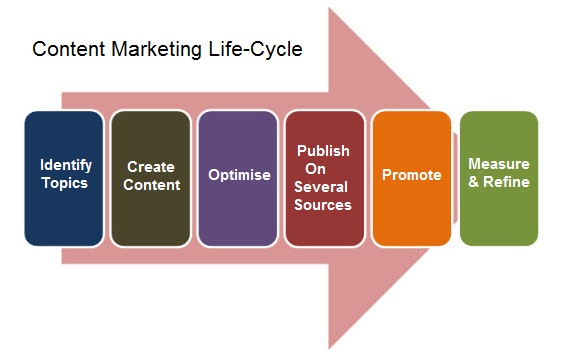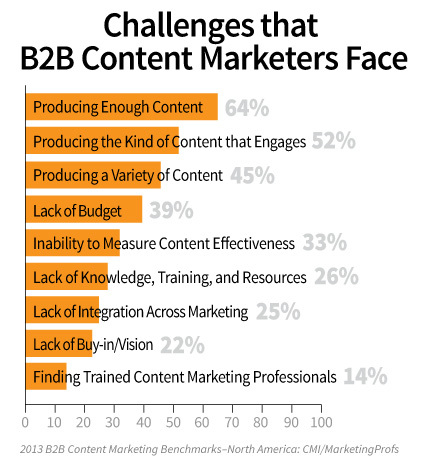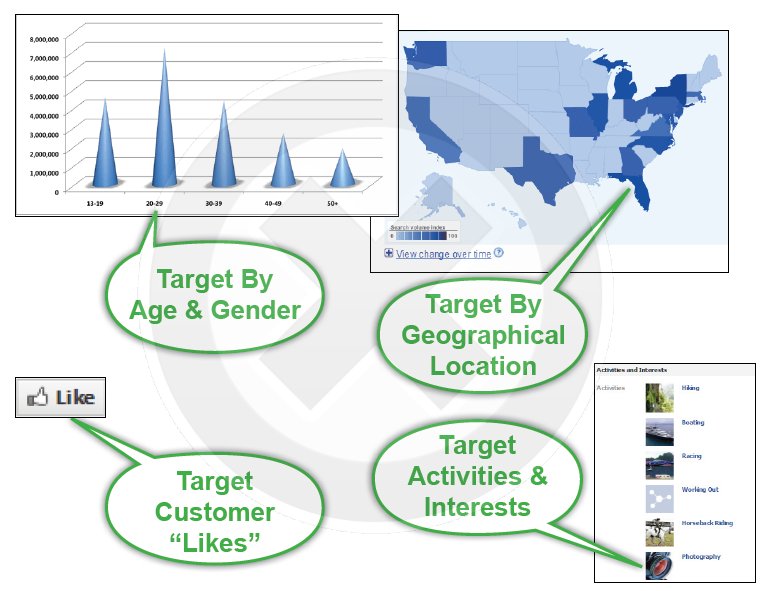Facebook’s Slow but Sure Death by Algorithm for B2B Brands & Your Alternatives
For business to business brands Facebook has become the “social media Secret Santa” - you know you’re getting something but not quite sure what.
A few weeks ago Facebook made it clear that brands have to pay to play on the platform: organic reach with consumers who have engaged with your brand has been once again reduced to almost nothing.
It’s death by a changing algorithm.
Fortunes have been made by nameless social media mavens touting the wonders of Facebook.
In their defense, in years past, many were right. If your brand was early to the party 3-5 years ago Facebook was a great platform to stake out a homestead.
Today (and even in the “early days”) you are competing with every consumer’s picture of their favorite aunt, new car, unending flow of selfies, etc.
Standing out in a news feed is increasingly much harder and for B2B brands, probably not worth the time and effort.
If you are doing business with consumers, there is no better platform for consumer reach, although Instagram and Pinterest are starting to make inroads.
But, to underscore, you gotta pay the dues to sing the blues and “free” referral traffic does not exist on this platform unless you’re a celebrity brand.
Should you abandon Facebook if you’re a B2B brand?
Yes! You have much better options.
Content Strategy Rocks: you’re renting on any social media platform and a content strategy is a wonderful alternative:
Content generated traffic converts much better than social.
You own this intellectual property (content!) and it’s not subject to an ever-changing algorithmic shift dictated by the whims of execs who need to please Wall St.
Content drives downstream search rankings: no need to say more.
Content is unfettered marketing. If well done it will generate shares across the social web (hopefully LinkedIn and Twitter).
And yes, content is now the coin of the realm for any business or consumer facing brand. It defines your brand, products, services and market focus.
Smart Content informs and engages and it’s what you need to be successful and the hyper-linked post will give you a deeper dive into savvy content marketing.
 Every Content Marketing Campaign should utilize an Editorial Calendar (this link takes you to a no reg required download in Excel format that will save you time).
Every Content Marketing Campaign should utilize an Editorial Calendar (this link takes you to a no reg required download in Excel format that will save you time).
Look at other Social Platforms
Twitter, Linkedin, YouTube and SlideShare are stellar alternatives for Facebook. Each has it’s own unique challenges, risks and rewards but all are worth your time.
And, to underscore, Content strategy complements each of these platforms. Your creating once and then sharing across all.
Chunk a blog post into bite sized PowerPoint presentations via SlideShare (owned by LinkedIn), share this via all personal profiles on LinkedIn and Tweet it out on a rinse and repeat basis.
LinkedIn Best for Business to Business Focused Brands
- Create a full Profile: Keyword driven Profile Summary, Past Jobs/with dates, Bio picture, Education, Non-Profit Work, Skills/Expertise, Add Presentations/White Papers – prepare to spend 8-10 hours on a robust profile and use LinkedIn’s completion percentage algorithm.
- Don’t create a profile w/out a bio picture; it increases your connectivity by 11X – so many ignore this and also don’t put quality time into profile.
- Ignore endorsements for others, this is a waste of time.
- Don’t join Groups where you are preaching to the choir. These don’t generate leads. Groups may be a waste of time vs. other marketing activities not on this platform. Check your analytics referrals.
- Connect your WordPress Blog to your LinkedIn profile account during setup so blog posts are automatically shared on the platform.
- Pro Tip: LinkedIn owns SlideShare; so, integrate any PowerPoint Presentations with your Profile.
- Share your Content (Blog Posts, Valuable News) with Profile Status Updates 2-4 times per day; remember, content curation is important. Some Pros use TwitterFeed to share News from 3rd party sources. But, I don’t recommend this.
- For better or worse, LinkedIn’s Newsfeed is becoming image centric; so, don’t rely solely on textual updates – be creative with your images.
- Remember your connections drive your newsfeed – demographic targeting is a good thing. Although some pros just look for high volume connectivity with minimal targeting.
- Use LinkedIn’s publishing functionality as it can drive significant traffic, adds luster to your profile. Don’t forget to add a blurb at the bottom thank others for reading & commenting, and cross link all of your published content on each single piece of content, add links to web site and social profiles.
- Update your Profile frequently: 3-5X per every 60 days at a minimum.
- Pay attention to LinkedIn’s new profile analysis tools which show your levels of engagement: these are not robust but will give you some perspective.
- LinkedIn’s “People You Know Tool” has been recently upgraded (integrating an algorithm with import features via email) – useful for building connections. And their Outlook Plugin is cool too.
- LinkedIn Mobile Phone App has good basic functionality and mobile growth is skyrocketing.
- Linkedin has opened up their API (Application Programmer Interface) and there are a large number of plugins that work well – here is a great collection of the top ten via Mashable.
LinkedIn Optimization and best Practices (deeper dive 1,500 word summary)
Advanced Twitter Marketing: Twitter May Deliver better ROI for Your Business than LinkedIn (but, takes time to scale)
- Create “influencer” lists of your own and follow others created by thought leaders, competitors and/or others in your industry.
- Participate in Twitter Chat Discussions: some are like drinking from a fire hose, but dive in and Tweet to get your brand heard.
- Change your profile frequently; it gets ranked by Google immediately.
- Connect your Twitter account with other platforms (this is just good content marketing) and don’t forget to embed Twitter account with email newsletter.
- Use high impact images on Twitter: 20-40% of your Tweets should have attached images.
- Use Twitonomy to understand what your competitors are doing: follow their lists, assess their content marketing strategy: what they are sharing, hashtag usage, who they are Following.
- Invest time: be patient and expect to spend 3-6 months to build up a Following on Twitter; forget your Follower count: a smaller and engaged community is much better than larger group of Followers who are not engaged.
- Used Tweetdeck to segment lists (“columns”) of users, hashtags relating to your industry, competitors and your own lists.
- Twitter’s Advanced Search can be used to pull up hashtags or keywords used by potential customers who are Tweeting about a problem they are having. This is 1.0 data-mining and labor intensive; but, can be useful for sourcing leads or partners.
- Twitter’s new profile page is a great way to use a dramatic image that makes your brand stand out – change it at least once a month. Pin your best Tweet every few days to your profile page: should be a Tweet linking to your blog or other branded content.
- Use Social Bro for uploading email contacts and getting a list of all Twitter accounts.
- Don’t just Tweet your headlines: extract “fresh” headlines from the body of a blog post, use questions or quotes from your content.
- Create custom images with text overlaid with the image. These can be mini advertisements for your business.
- Tweriod lets you analyze the times when your Followers are online and sharing your content.
- Use Twitter Cards to attach rich visual images to your Tweets
- Use ManageFlitter to help you automate some of back end heavy lifting (low cost and high value)
Bite the Facebook Bullet and Advertise
Facebook has data on just under 1.5 Billion users. The targeting is powerful, can drive conversions and in some cases, your ad spend may be significantly lower than PPC.
Expect to spend 3-5 hours setting up an ad campaign and if your media spend is more than $500. a month it’s well worth your time to use Atlas (the rebranded Ad Platform)
Test your targeting (interests, age, marital status, zipcode) and early on you don’t need to use the Ad Platform as long as you are being conservative with your ad spend (under $50 a day).
One of the most powerful drivers for brands advertising with Facebook is generating “social referrals” - there is no other platform that can generate this kind of traffic; i.e. friends referring a link or product recommendation to their friends.
Note: Facebook is in an arms race with Google and they are buying demographic information from data providers and bundling these with their own data.
You are getting “reach” and “scale” (in marketing speak) across hundreds of millions of users and to date Google has been the only viable alternative.
How to Advertise on Facebook: Ten Key Metrics
- Establish goals; Page Likes, Visits to your web site, Fan engagement on your page. Facebook’s Ad processes will map to these goals, so choose carefully.
- Don’t every buy Followers for any social account. Use Facebook’s advertising to build up your Fan base initially. The more Likes you have for a page the more robust your page looks and this will give you broader “reach” (more fans) for an ad campaign that is more offer focused.
- Use Facebook Offers Campaigns to drive list signups; a free ebook in exchange for an email address works great.
- Be very clear with a call to action embedded in your ad. Facebook users are distracted and confusing kills ROI.
- Test Activated Sponsored Stories (in the Newsfeed). Yes, you are paying Facebook for the privilege of making sure you get “seen” on the platform.
- if you are promoting a Facebook page the Title of your page will be used for the Headline of your ad. Customize the Headline and know, like any ad campaign, the Headline will determine success or failure.
- Control Your Ad Costs: you can bid on clicks, impressions or a specific action (download). Facebook’s automatic bid option may cost you money: bidding for clicks or optimizations can be cheaper.
- Choose a Daily or Lifetime Budget and note each campaign has a separate budget.
- Daily Media Spend it set at $50. but you can go in an change your daily ad budget at any time after a Campaign is set up.
- Facebook has powerful built in targeting: age, gender, location, marital status, language, education and more; test and refine these.
Note: An average Cost Per Click on Facebook is $1.00 and increasing all the time; test advertising on Yelp and Google’s Display Network as alternatives to ads on Facebook.
Think with a mobile mindset when doing anything on Facebook - 50%-75% of activity on Facebook is via mobile.
What are Your Best Options?
Content marketing is your absolute best alternative to Facebook or any social media marketing platform bar none.
If your business is targeting consumers then you should set up a Business Page via Facebook and test advertising on the platform vs. other types of ads.
Twitter and Linked are viable alternatives to business facing brands.
Your ROI on one platform vs. the other will vary tremendously, driven in part by how much time and resources are invested in social channel.
Make sure you have a fundamental grasp of Google Analytics to understand your referral traffic; i.e. LinkedIn vs. Twitter.
The results can vary tremendously and make sure you look at patterns across a 3-6 month period prior to changing your strategy.




